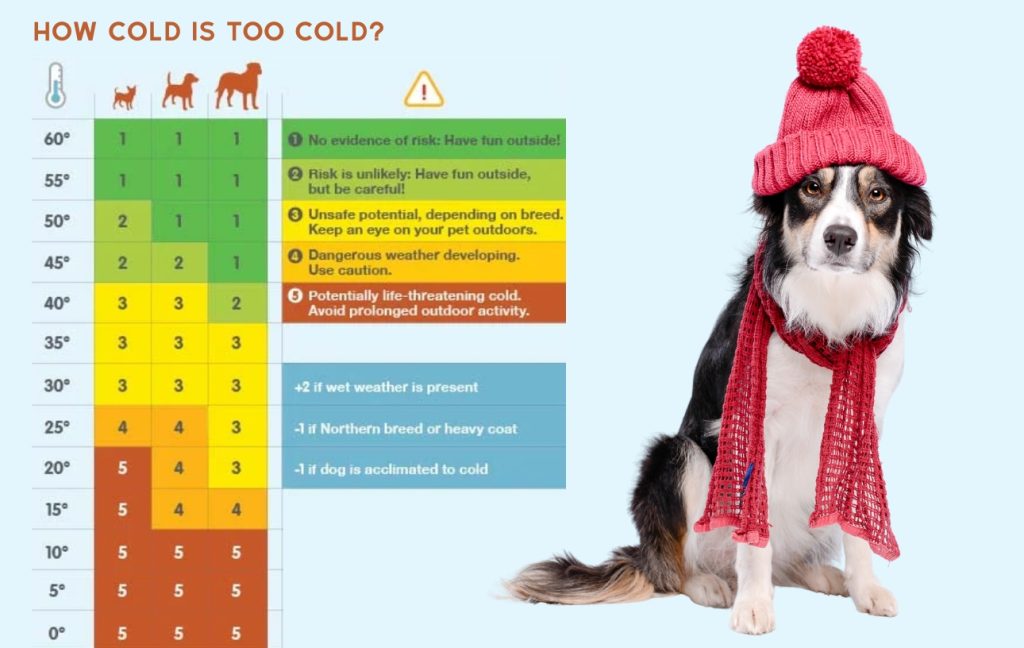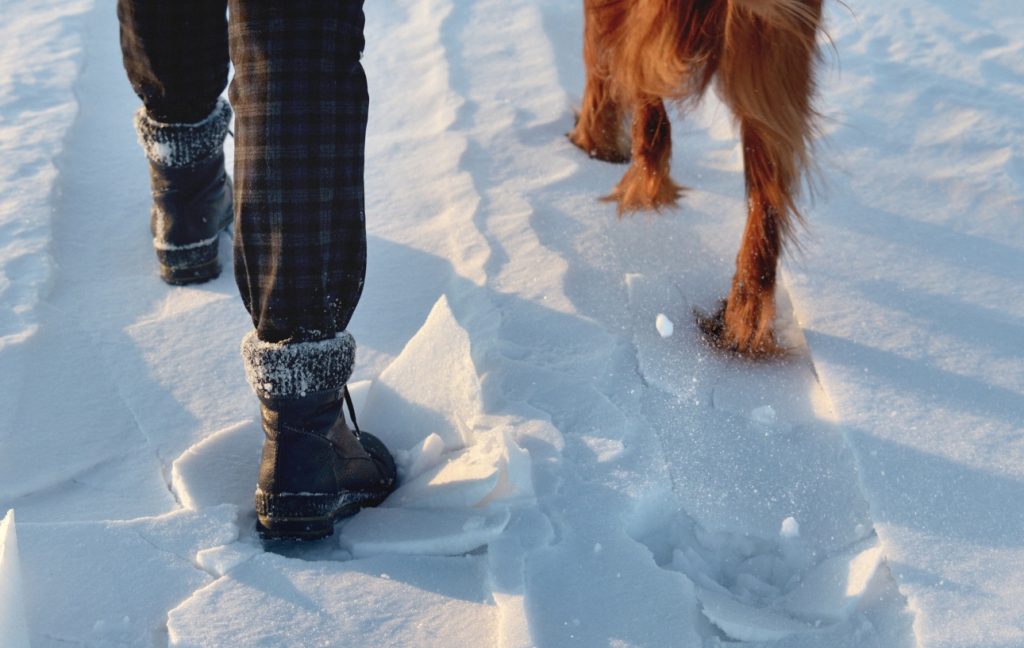As the temperature drops, many dog owners ask:
“Is it safe to take my dog outside in this weather?”
Fortunately, animal behavior labs have created guidelines to help us understand how cold is too cold for dogs based on temperature and dog size.

Safe Temperatures by Dog Size
- Small dogs (under 10kg): Safe down to 12°C (53°F)
- Medium dogs (10–20kg): Safe down to 10°C (50°F)
- Large dogs (over 20–25kg): Safe down to 7°C (44°F)
These temperatures are safe zones for outdoor play. But when you see the risk index reach 3 or higher, caution is needed—especially for dogs with short fur or breeds that are genetically sensitive to the cold (like Italian Greyhounds, which often have underactive thyroids).
⚠️ What is “Risk Level 5”?
- That’s when cold becomes life-threatening. Dogs should be dressed warmly or brought indoors at this stage.
Adjusting for Real Conditions
Don’t forget to modify the safety index based on your dog’s situation:
- +1 point if it’s snowing or humid
- +1 point if your dog is over 7 years old or under 6 months
- –1 point for breeds like Siberian Huskies or Alaskan Malamutes, which love the cold
Interestingly, many cold-resistant breeds that appear lethargic in summer become joyfully energetic in winter, thriving in the snow!
Warning Zones by Temperature
Below –6°C (21°F): Dangerous for small dogs, especially if exposure is prolonged
- Below –12°C (10°F): All dogs should limit outdoor time regardless of size
- Dogs with low immunity or hormone-related hair loss should always wear protective clothing in cold weather
What If My Dog Hates Clothes?
Some dogs resist being dressed, even growling or biting.
For those dogs, try coats that only secure under the belly with a single strap. These are simpler, quicker, and more comfortable.
Are My Dog’s Paws Cold?
Dog paw pads are amazing.
They’ve evolved to handle rough terrain—gravel, snow, mud—and are equipped with a heat exchange system, where arteries and veins sit close together to circulate warmth efficiently.
That means paws stay warm even in cold weather.
But Watch Out for: Deicing Salt (Calcium Chloride)
❗ This chemical is often spread on snowy streets. It can:
- Irritate paw pads
- Cause dogs to lick and ingest it
- Lead to vomiting or digestive issues
If your dog shakes its paws during or after walks, it might be trying to get rid of the irritant.
Post-Walk Paw Care Tips
- Always rinse your dog’s paws after winter walks
- Consider using pet-safe paw balm or “foot wax”
- If your dog tolerates it, protective boots can help—but many commercial dog shoes are uncomfortable, so test them gently.
Final Thoughts
Winter walks are wonderful—but only when done safely.
Adjust based on breed, age, fur type, and local conditions. Listen to your dog’s body language, and keep post-walk care a consistent habit.



